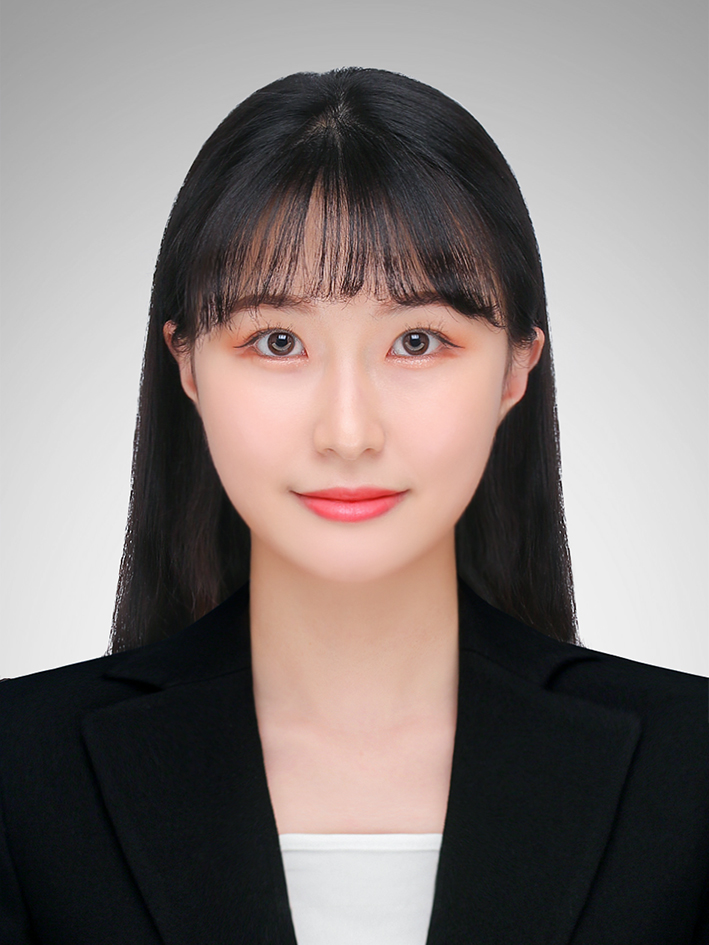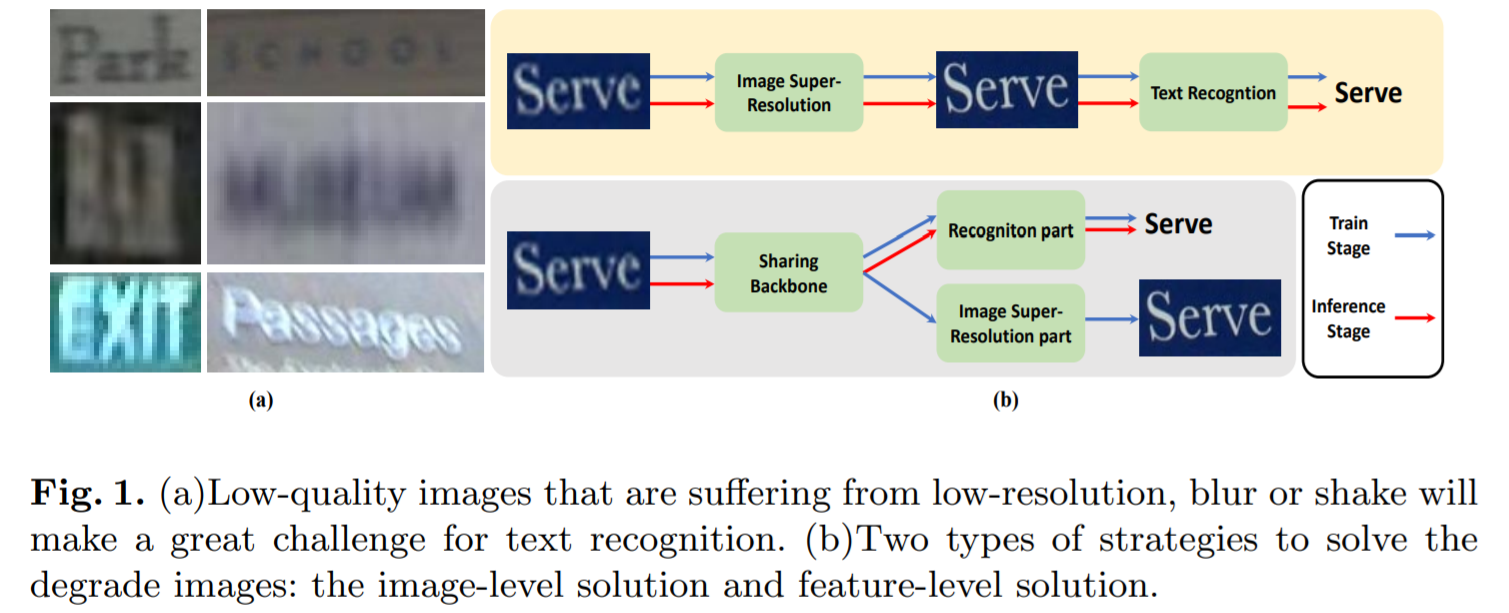[Paper Review] PlugNet: Degradation Aware Scene Text Recognition Supervised by a Pluggable Super-Resolution Unit
PlugNet: Degradation Aware Scene Text Recognition Supervised by a Pluggable Super-Resolution Unit
Mou, Yongqiang, et al. “PlugNet: Degradation Aware Scene Text Recognition Supervised by a Pluggable Super-Resolution Unit.”
Abstract
- 기존의 문제점 : high blur나 low-resolution을 갖는 images에 의해 recognition 성능이 감소
low-quality scene text를 인식하기 위한 네트워크를 제안
- PlugNet : pluggable super-resolution unit(PSU)을 갖는 scene text recognizer
PSU와 함께 end-to-end로 학습이 가능
low-resolution으로 인한 문제를 feature level에서 해결
PSU는 inference time에 제거할 수 있어서 추가적인 계산비용이 들지 않음
-
Pluggable super-resolution unit : low-quality text images를 잘 인식하기 위한 더 강력한 feature representation 학습
-
Feature enhancement를 위한 2가지 전략
1) Feature Squeeze Module : spatial acuity의 손실을 감소
2) Feature Enhancement Module : 다양한 semantics을 얻기 위해 low-level features와 high-level features를 결합
- Text recognition benchmarks(IIIT5K,SVT,SVTP,ICDAR15,etc)에서 SOTA 성능 달성
Introduction
- SOTA scene text recognizers는 2가지 categories로 나뉨
1) The bottom-up approaches : 글자 단위에서 text를 인식
2) The top-down approaches : 전체 이미지에서 text 인식
문제점 : nosing, blurred or low-resolution으로 인한 low-quality images가 잘못된 결과를 초래
- 기존 다른 컴퓨터 비전 tasks에서 low-quality images를 해결할 때, image-level에서 문제를 다룸
SR network + text recognition network는 계산 효율성이 좋지 않음 (시간이 너무 오래 걸림, fig.1.b 첫번째 그림)
-
기존의 방식들과 다르게 feature-level에서 degradation images를 해결함 (fig.1 b 두번째 그림)
-
pluggable super-resolution unit과 함께 end-to-end 학습이 가능한 scene text recognizer 제안 (PlugNet)
4-parts : rectification network - CNN backbone - recognition network - pluggable super-resolution unit(PSU)
training stage에서 feature quality를 향상시키기 위해 upsampling layers와 적은 convolution layers로 구성된 light-weight pluggable super-resolution unit을 사용
inference stage에서 PSU를 제거하기 때문에 추가적인 계산 비용은 들지 않음
- 많은 text recognition framework들이 CNN-LSTM을 사용하여 높은 성능을 보임
한계 : CNN은 rotation, shift와 같은 spatial-level issues에서 제한된 성능을 보임
spatial acuity(예리함)의 손실로 인해 recognition part와 rectified part 모두 효과적인 학습이 어려움
-
최종 one-dimension vectors에서 더 많은 spatial 정보를 유지하기 위해 Feature Squeeze Module을 제안
-
Feature Squeeze Module
feature resolution을 유지하기 위해 마지막 3개의 blocks에서 down-sampling convolution layers를 제거
feature maps에서 one-dimension vectors를 생성하기 위해, 하나의 1x1 convolution layer와 하나의 reshape layer 사용
모든 datasets에서 상당한 성능향상을 보임
- Featrue Pyramid Networks에서 영감을 얻어, Feature Enhancement Module(FEM) 제안
low-level에서 high-level로 semantics 정보 결합
- The main contributions
1) end-to-end trainable scene text recognizer(PlugNet)
2) feature squeeze module(FSM)
CNN-based backbone과 LSTM-based recognition model을 연결시키는 방식을 제공하고, 이는 top-down text recognition 방식을 위한 baseline으로 사용될 수 있음
3) feature enhance module(FEM)
low-level features와 high-level features를 결합시켜 sharing feature maps을 강화시킴
4) the state-of-the-art performance
Approach
3.1 Overall Framework
- Rectification Network (fig2.a)
irregular scene text를 rectication 시키기 위한 네트워크
Aster(irregular scene text recognition에서 높은 성능)와 동일한 방식을 사용함
3-parts : localization network - grid generator - sampler
1) localization network : CNN-based network로 input img에서 n개의 control points로 text의 경계선(borders)을 localize
2) grid generator : localization 결과를 활용하고, Thin-Plate-Spline(TPS)를 통해 각 pixel에 대한 transformation matrix를 계산
3) sampler : rectifed images를 생성
- Sharing CNN Backbone (fig2.b)
feature를 추출하기 위해 ResNet-based 구조를 사용
Aster와 비슷한 구조이지만 더 많은 spatial 정보를 유지하기 위해, 마지막 3개의 CNN blocks에서 down-sampling layers를 제거
- Recognition Part (fig2.d,e)
ESIR, Aster를 따라서 text recognition을 위해 LSTM-based 방식을 사용 (전체 sequences를 학습)
1) Feature Squeeze Module
sharing CNN backbone에서 나온 features가 입력으로 들어가고, one-dimension vectors 생성
2) Recognition Head : squence-to-sequence
two-layer Bidirectional LSTM(BiLSTM) : 양방향 long-range dependencies를 포착하여 강력한 새로운 sequence H 생성 (input과 동일한 길이), encoder
two-layer attentional LSTM : sequence H를 output sequence Y로 변형시킴, decoder
- Pluggable ST Unit
FSM에 의해, sharing CNN backbone이 image resolution을 유지할 수 있기 때문에 네트워크에 PSU를 붙이기 쉬움
high-level features에서 super-resolution images를 만듦
3.2 Pluggable Super-resolution Unit
-
feature-level에서 degradation images를 해결하기 위해 디자인됨
-
PSU는 sharing CNN backbone이 degradation images의 features를 더 잘 representation하도록 도움을 줌
-
RCAN 구조를 이용하여 PSU를 만듦
-
하나의 Residual Group(RG)를 생성하기 위해 2개의 two Residual Channel Attention Block(RCAB)를 사용
2개의 RG는 최종 PSU를 만드는데 사용됨
- inference stage에서 PSU는 제거되기 때문에 추가적인 계산 비용이 들지 않는 것이 장점
3.3 Feature Enhancement
- Feature Squeeze Module (fig2.d)
one-dimension vectors에서 더 많은 resolution 정보를 유지하기 위해 down-sampling convolution layers를 FSM으로 대체
FSM은 channels을 감소기키기 위한 하나의 1x1 convolution layer와 feature maps에서 one-dimension vectors를 생성하기 위한 하나의 reshape layer로 구성(적은 계산 비용)
- Feature Enhance Module (fig2.b)
low-level에서 high-level로 features를 결합시킴
down-sampling layer를 통해 shape을 변형시키고, low-level에서 high-level로 모든 feature maps을 concatenation 수행하여 향상된 feature를 얻음




Leave a comment